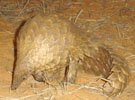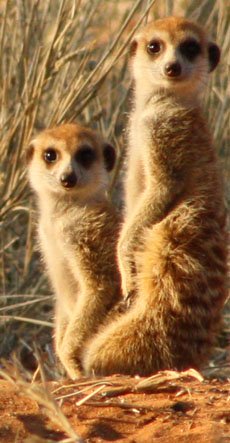My Namib Desert Zebra
by Stephan Hofmann
(Illinois, USA)
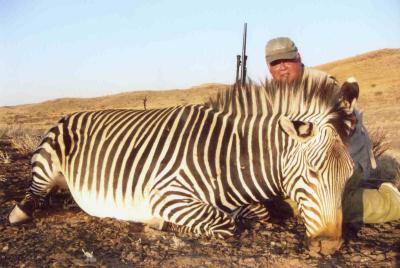
My Mountain Zebra, hunted in the Namib Desert
By 2006, I had hunted many of the animals in North America. I wanted to go on a big trip and do something outstanding. As Anthony Hopkins said in the movie The Edge: "I wanted to do something unequivocal."
I thought going on a shooting Safari to Africa would qualify as being unequivocal.
After careful preparation for the trip, I arrived in Windhoek and went through customs easily. Namibia makes a lot of tourism money from hunters and they make it a mere formality to enter the country.
My Namibian trip would be a 10-day safari with Barry as my PH.
On the sixth day of my safari, we were going to the Namibian desert. This is the oldest and driest Desert in the world. Although it contains many varieties of animals and can be very beautiful, it can also be very harsh and very deadly.
The tallest sand dunes in the world are in Namibia. Some of the oldest plants in the world, the Welwitchia, thrive in the Namibian Desert. The Welwitchia plant can be 1000 years old. The trunk grows into the ground in its search for water and two broad leaves remain on top. The plant can reach heights of seven feet. The Namib Desert in Namibia and Angola are the only places in the world that this fossil plant grows.
Desert dwelling Elephants and Rhinoceros have learned to live in the harsh environment of the desert with little food and little water. Some of the largest Springbok in the world inhabit the Namib Desert.
We were going to the Desert to hunt these extraordinary Springbok. There was also a chance that I might get the opportunity to harvest a Hartman’s Zebra or Mountain Zebra in the desert.
I awoke early that morning, went to the boma and stoked the embers of what was left of the previous night’s fire. I added more wood. Soon the fire was blazing. I listened to the jackals howl and watched the stars wheel overhead while I drank coffee.
Later in the morning I harvested a very good Springbok and afterwards we had lunch under a huge Mopane tree. The Springbok steak tasted very good! Barry split the fresh kidneys with his pocketknife and grilled them over the hot Mopane coals. The kidneys were very meaty and tasty. The trackers preferred the Springbok ribs, liberally seasoned. Everyone had plenty of meat. I drank a lot of grape Fanta since it was dry in the desert. The desert was not unbearably hot, just dry. It was so refreshing to sit under the big Mopane tree.
After an hour we decided to move. We followed the track deeper into the desert. We came to huge expanses of land that stretched as far as the eye could see. We saw a few small Springbok in the shimmering distance and followed a dry riverbed for miles. We saw Leopard prints in the sand and a flock of Ostrich followed us for miles. We saw some majestic Martial Eagles and Pale Chanting Goshawks floating overhead in the dry desert air. Once we almost got stuck in the soft sand of the dry riverbed.
We were following the dry riverbed into the mountains and came to a high plateau and found many Welwitchia plants in the hard rocky soil.
Near this plateau, I took another Springbok trophy – a 16” ram: a Gold Medal animal in Namibia!!
But now we were truly in the middle of nowhere. The sun was starting its descent into the Western mountains. The reds and oranges and yellows of the desert landscape were indescribable with the setting sun bringing out their beautiful palette of colors.
We came to a waterhole and many animal tracks were visible around it. Barry found some Mountain Zebra tracks. Mountain Zebra are quite rare in most African countries, but are plentiful in Namibia. If I shot one it would be a real trophy.
We came to a series of plateaus with long dried grasses and rocky ground. We saw many herds of Springbok and also herds of beautifully colored Gemsbok. This was perfect country for Gemsbok.
The Gemsbok can tolerate extremely high temperatures and can live off the water from the plants that it eats.
The tracker and Barry spotted a herd of Zebras. We drove over some unmercifully rocky ground to get close to them. We got to within 450 yards of the Zebras. Barry wanted me to take a shot. He had seen me put ten Namibian animals into the salt with shots reaching to 275 yards and was satisfied with my marksmanship. He thought I could make the shot. I took careful aim, but missed as was evidenced by the Zebra running away at full gallop. I told Barry that I thought 450 yards was too long for me.
We drove further up into the mountains where some more Zebras were spotted. This time we got to within 305 yards of the herd stallion. He was standing broadside to me. The setting sun outlined every stripe on his body in detail. The stallion was beautiful!!
Barry said to shoot him in the shoulder where the stripes form a perfect triangle for a natural target. I knew that the Remington Cor-Lokt 180 gr bullet fired from my Ruger .300 Win Mag would drop 3.6 inches at 300 yards. I took careful aim with the bipod to steady my rifle. I placed the crosshairs on the triangular spot knowing that the bullet would drop 4 inches and pierce the stallion’s heart. I placed my left hand under my right hand for added stability. I slowly squeezed the trigger.
Whuuuumpp! The bullet hit the Zebra solidly. His back legs kicked out and he dropped in his tracks. A magnificent shot!! "Great shot, Captain! Well done!" said Barry.
I could hardly believe that I made such a shot on such a magnificent animal in such an exotic location. My Herero tracker, Yassir, smiled at me and asked, "Are you happy?" I replied that I was deliriously happy. He said, "If the Captain is happy, I am happy." So simple, yet so profound.
Actually I was in a daze I was so happy. I was on sensory overload from my Namibian experiences. It was a pleasant overload!
On the way back to camp we spotted three sway backed, grey colored Namib Desert dwelling Elephants near a waterhole in the gathering darkness. With the harvest of the beautiful Springbok and the magnificent Mountain Zebra, the Elephant sighting was a fitting finish to my superb excursion to the Namib Desert.
That night we had a fine meal of Kudu chops. After the delicious dinner which included fresh baked bread and apple crisp, I sat in the Boma before a fragrant Mopane wood fire, smoked a fine Nicaraguan cigar, drank a cold Windhoek Lager, and nibbled on spicy African biltong.
I shared stories with my hunting mates, looked into the blazing African sky and saw the Southern Cross in the bright myriad of stars. For me, it does not get any better than this!
It had been a wonderful day and great adventure! It had been a day in Africa that I will never forget...
My next trip to Africa is already booked!
Stephan Hofmann
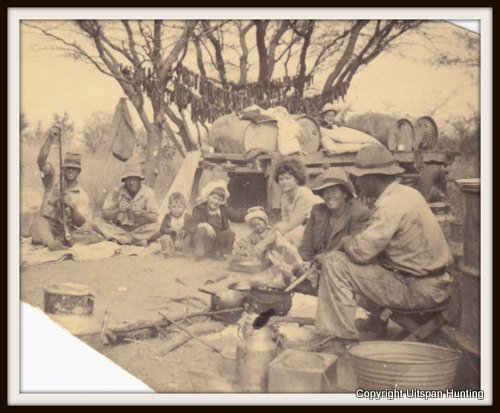
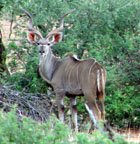
 Some animals have one sense more than man!The flehmen response is a particular type of curling of the upper lip in ungulates, felids and many other mammals. This action facilitates the transfer of pheromones and other scents into the vomeronasal organ, also called the Jacobson's Organ.
Some animals have one sense more than man!The flehmen response is a particular type of curling of the upper lip in ungulates, felids and many other mammals. This action facilitates the transfer of pheromones and other scents into the vomeronasal organ, also called the Jacobson's Organ.

